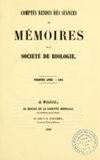[维甲酸对发育的遗传控制]。
摘要
维甲酸(RA)的两个核受体家族已经被表征。RAR家族成员(α、β和γ型及其同工型α 1、α 2、β 1至β 4、γ 1和γ 2)可被大多数生理上发生的类维生素a(全反式RA、9-顺式RA、4oxo RA和3,4二氢RA)激活。相比之下,RXR家族的成员(α、β和γ型及其亚型)仅被9cis-RA激活。除了受体的多样性之外,至少在体外,RARs与RXRs作为异源二聚体结合其同源反应元件,这一事实进一步增加了类视黄醇信号传导的复杂性。此外,在体外,RXRs还可以作为同型二聚体与一些DNA元件结合,并且是其他核受体的异源二聚体伴侣,包括TRs, VDR, ppar和一些孤儿核受体。为了评估不同RARs和RXRs类型和亚型的功能,我们在胚胎干细胞中通过靶向基因破坏产生了零突变小鼠。关于RARs的功能,我们发现RAR α 1和RAR γ 2零突变小鼠明显正常。缺乏RAR α或RAR γ(即所有α或γ亚型被破坏)的小鼠表现出可以通过RA治愈或预防的产后维生素A缺乏症(VAD)的各个方面,包括产后死亡、体重增加不足和雄性不育。RAR β 2(和RAR β)零突变体显示一个透镜后膜,这代表了胎儿VAD综合征最常见的缺陷。这些异常仅限于正常表达这些受体的一小部分组织,这表明在RAR家族中应该存在某种程度的功能冗余。为了验证这一假设,我们生成了RAR双空突变体。RAR α β, RAR α γ和RAR β γ复合突变体表现出胎儿VAD综合征的所有畸形,从而表明RA是维生素A衍生物,在器官发生的许多不同阶段和不同结构中起着至关重要的作用。有趣的是,几乎所有来自间充质神经嵴细胞(NCC)的结构都在RAR化合物突变体中受到影响。至于RXR的功能,RXR γ零突变体是活的、可育的和形态正常的。相反,RXR α阴性胎儿心室壁薄,在子宫内死于心力衰竭。在一些RAR复合突变体和VAD胎儿中也观察到心肌发育不全。因此,RXR α似乎作为心室心肌细胞分化的抑制剂和/或作为其增殖的正调节因子,这些功能可能涉及与RARs的异源二聚化和RA的激活。RXR β零突变体是可以存活的,但雄性是不育的,很可能是因为支持细胞的脂质代谢异常。在RXR α突变体中不存在的新的异常在RXR α /RAR (α, β或γ)复合突变体中产生。所有这些异常也见于RAR双突变体和VAD胎儿。相反,在RXR β或RXR γ和RAR (α、β或γ)零突变之间没有观察到这种协同作用的表现。这些数据有力地支持了RXR α /RAR异源二聚体是胚胎发育过程中RA信号通路的主要功能单位的结论。此外,由于RXR γ -/-/RXR β -/-/RXR α +/-突变体是可存活的,单个RXR α等位基因可以执行大部分发育中的RXR功能。Two families of nuclear receptors for retinoic acid (RA) have been characterized. Members of the RAR family (types alpha, beta and gamma and their isoforms alpha 1, alpha 2, beta 1 to beta 4, and gamma 1 and gamma 2) are activated by most physiologically occurring retinoids (all-trans RA, 9-cis RA, 4oxo RA and 3,4 dihyroRA). In contrast, members of the RXR family (types alpha, beta and gamma and their isoforms) are activated by 9cis-RA only. In addition to the multiplicity of receptors, the complexity of retinoid signalling is further increased by the fact that, at least in vitro, RARs bind to their cognate response elements as heterodimers with RXRs. Moreover, RXRs can also bind, in vitro, to some DNA elements as homodimers, and are heterodimeric partners for other nuclear receptors, including TRs, VDR, PPARs and a number of orphan nuclear receptors. To evaluate the functions of the different RARs and RXRs types and isoforms, we have generated null mutant mice by targeted gene disruption in ES cells. As to the functions of RARs, we found that RAR alpha 1 and RAR gamma 2 null mutant mice are apparently normal. Mice deficient in RAR alpha or RAR gamma (i.e., all alpha or gamma isoforms disrupted) show aspects of the post-natal vitamin A deficiency (VAD) syndrome which can be cured or prevented by RA, including post-natal lethality, poor weight gain and male sterility. RAR beta 2 (and RAR beta) null mutants display a retrolenticular membrane which represents the most frequent defect of the fetal VAD syndrome. That these abnormalities were restricted to a small subset of the tissues normally expressing these receptors suggested that some degree of functional redundancy should exist in the RAR family. To test this hypothesis we then generated RAR double null mutants. RAR alpha beta, RAR alpha gamma and RAR beta gamma compound mutants exhibit all the malformations of the fetal VAD syndrome, thus demonstrating that RA is the vitamin A derivative which plays a crucial role at many different stages and in different structures during organogenesis. Interestingly, almost all the structures derived from mesenchymal neural crests cells (NCC) are affected in RAR compound mutants. As to the functions of RXRs, RXR gamma null mutants are viable, fertile and morphologically normal. In contrast, RXR alpha null fetuses display a thin ventricular wall and die in utero from cardiac failure. A myocardial hypoplasia has also been observed in some RAR compound mutants as well as in VAD fetuses. Thus, RXR alpha seems to act as an inhibitor of ventricular cardiocyte differentiation and/or as a positive regulator of their proliferation, and these functions might involve heterodimerization with RARs and activation by RA. RXR beta null mutants are viable but the males are sterile, most probably because of an abnormal lipid metabolism in the Sertoli cells. New abnormalities, absent in RXR alpha mutants, are generated in RXR alpha/RAR (alpha, beta or gamma) compound mutants. All these abnormalities are also seen in RAR double mutants as well as in VAD fetuses. In contrast, such manifestations of synergism are not observed between the RXR beta or RXR gamma and the RAR (alpha, beta or gamma) null mutations. These data strongly support the conclusion that RXR alpha/RAR heterodimers represent the main functional units of the RA signalling pathway during embryonic development. Moreover, since RXR gamma-/-/RXR beta-/-/RXR alpha +/-mutants are viable, a single allele of RXR alpha can perform most of the developmental RXR functions.

 求助内容:
求助内容: 应助结果提醒方式:
应助结果提醒方式:


